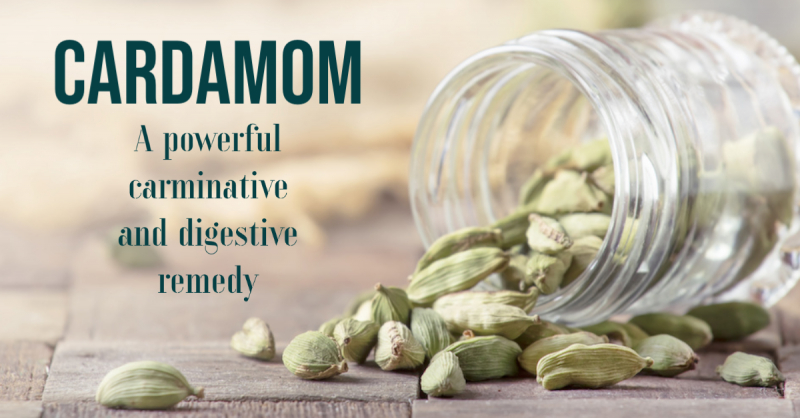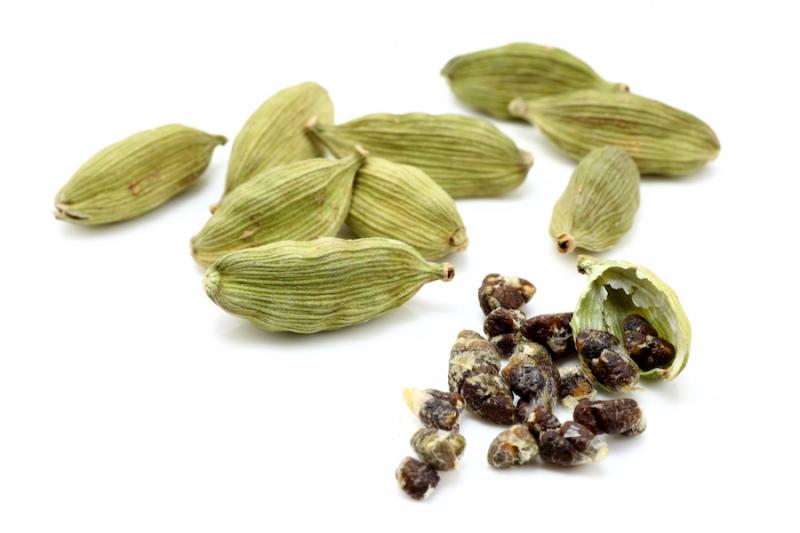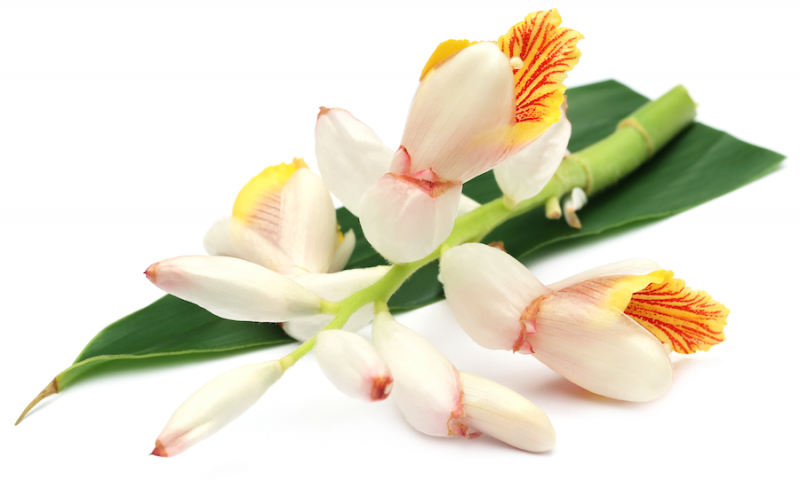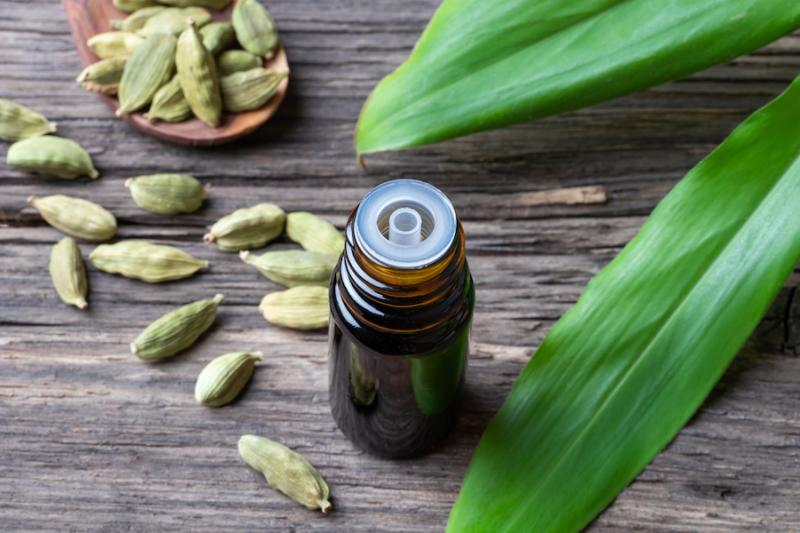
One of the oldest known spices, the use of cardamom goes back to ancient Egypt. In spite of this, many Americans aren’t very familiar with this spice, something I hope to remedy in this article. Cardamom is aromatic and slightly pungent and sweet, with a warming energy. It’s a member of the ginger family, Zingiberaceae. The family name provides a nice clue to the basic effect that cardamom and ginger share. They both add a little zing to your energy.
The fragrance of cardamom is associated with Christmas for me because the mother of my four children used to make braided cardamom bread at Christmas time. The smell of the fresh bread was really delightful. I found several recipes for cardamom bread online and picked a Swedish cardamom bread recipe as an example if you’d like to make some yourself. You can also find some nice recipes for cardamom cookies online. Cardamom pods are also an ingredient in some of the Indian curries I’ve made.
Cardamom as a Carminative
 Medicinally, I think of cardamom primarily as a carminative, a remedy to aid digestion and ease gas and bloating. It’s used in both Ayurvedic medicine (it’s a native of Sri Lanka and India) and traditional Chinese medicine (TCM) for this purpose. In Ayurvedic medicine, it’s also used to improve appetite in anorexia and debility and to ease bad breath.
Medicinally, I think of cardamom primarily as a carminative, a remedy to aid digestion and ease gas and bloating. It’s used in both Ayurvedic medicine (it’s a native of Sri Lanka and India) and traditional Chinese medicine (TCM) for this purpose. In Ayurvedic medicine, it’s also used to improve appetite in anorexia and debility and to ease bad breath.
In TCM it’s used to weave stagnant food through the digestive system to reduce bloating, swelling in the stomach, and pain in the digestive tract. Being mildly antispasmodic it’s also good for colic and intestinal cramps.
Cardamom is used for easing a cold, damp stomach (or spleen in TCM). It’s used for poor digestion, where food sits for a long time on the stomach. You’d see this on the tongue as a damp tongue with a heavy white mucus coat, especially in the mid to back part of the tongue.
These digestive properties make cardamom a great addition to digestive bitters blends. It’s an ingredient in Swedish Bitters and a number of other recipes for herbal bitters. Because it has a mild, almost sweet flavor, it’s a good ingredient to help soften the bitterness of other herbs in the formula.
Other Uses for Cardamom
 Cardamom is good for the lungs. It is warming to the lungs and helps to expel mucus. It can be helpful for coughs, bronchitis, and asthma. It can also ease pressure in the chest due to digestive bloating.
Cardamom is good for the lungs. It is warming to the lungs and helps to expel mucus. It can be helpful for coughs, bronchitis, and asthma. It can also ease pressure in the chest due to digestive bloating.
It also has a calming effect on the nerves. It’s especially helpful for nervousness that upsets the digestive system.
My favorite TCM book says it is used to calm a restless fetus and help to prevent spontaneous abortion. Matthew Wood says it helps to clear the mind. The memory of smelling that cardamom bread makes me think that’s true.
One of my Ayurvedic books says it has a reputation as an aphrodisiac. That’s interesting. I don’t have a lot of faith in herbs as aphrodisiacs, but vanilla has that reputation, too. The two blend well together so you might mix them with damiana and other aphrodisiac herbs and see how it works.
Cardamom Essential Oil
 Cardamom essential oil has many of the same uses as the herb because the oil is one of the main ingredients in the herb. Cardamom EO helps to ease colic, digestive and intestinal cramps, dyspepsia and stomach pain, and, of course, gas and bloating. The oil also helps to remove mucus from the lungs and calms the nerves in cases of nervous exhaustion and depression.
Cardamom essential oil has many of the same uses as the herb because the oil is one of the main ingredients in the herb. Cardamom EO helps to ease colic, digestive and intestinal cramps, dyspepsia and stomach pain, and, of course, gas and bloating. The oil also helps to remove mucus from the lungs and calms the nerves in cases of nervous exhaustion and depression.
The oil, like the herb, is considered a qi tonic. It helps to move and regulate qi while warming the lungs and digestive system. The herb and the oil are associated with the earth element in TCM, which is associated with the emotion of worry. Worry is seen as adversely affecting digestion in TCM. In this vein, the oil helps people who are burdened by worries and responsibilities. It helps with motivation, inspiration, and enthusiasm, helping a person have the emotional strength to carry on.
So, if the world situation has you worried and the dark days of winter are feeling a little gloomy, get some cardamom and try making a cup of tea or some holiday bread or cookies with it. Make sure to get the cardamom pods and grind them yourself to enjoy the warming and invigorating fragrance of the freshly ground spice.
Steven's Articles
December
-

-
The Evidence for Berberine
A yellow alkaloid found in traditional infection-fighting…
-

-
The Sensible Use of Caffeinated Herbs
Kola nuts, guarana, and yerba mate and other herbs…
-

-
The Health Benefits and Problems with Coffee
This popular caffeinated beverage can be beneficial…
October
-

-
Understanding Caffeine & Cellular Adaptation
Preserving the power of caffeine's buzz and the…
September
-

-
Horseradish
A pungent spice for aiding protein metabolism…
-

-
Banaba or Crepe Myrtle
A beautiful tree from Southeast Asia whose leaves…
August
-

-
Monkeyflowers
Flower essences to help see ourselves more clearly…
-

-
Mariposa Lilies
Strengthening the bond between mother and child…
-

-
The Noble Bay Leaf
A common kitchen herb for aiding digestion and…
-

-
Epimedium: Horny Goat Weed
A circulatory stimulant and kidney yang tonic…
July
-

-
The Medicinal and Nutritional Benefits of Apricots
A nutritious fruit and valuable medicinal seed for coughs
-

-
Dogwoods
Asian dogwood is used to stop excessive discharge,…
June
-

-
Neem: The Village Pharmacy
A popular Ayurvedic remedy for dental and immune…
-

-
Spilanthes: The Toothache Plant
A traditional remedy for teeth and gums, as well…
-

-
Forsythia
An anti-inflammatory, fever-reducing, and infection fighting herb

